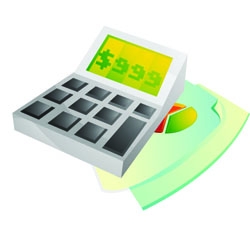
Buying a new home is getting more affordable by the day.
Bank On It
BUYING A HOME IS GETTING MORE AFFORDABLE BY THE DAY. “IN ALL THE ECONOMIC MISERY, IT’S THE ONE THING THAT’S GETTING BETTER,” SAYS DANIEL MCCUE, A RESEARCH ANALYST AT HARVARD UNIVERSITY’S JOINT CENTER FOR HOUSING STUDIES.

In fact, those who qualify for a mortgage loan may now have a once-in-a-generation opportunity to buy the home of their dreams, thanks to lower prices and low interest rates.
Interest rates for 30-year, fixed-rate mortgages have recently drop-ped to around 5 percent, and the number varies from week to week.
But consider that the monthly payment on a $160,000, 30-year, fixed-rate loan at 5.34 percent is $892. A year ago, at 6.37 percent, that same loan would have cost $997 a month. If, as at least one economist predicts, rates drop to 4.5 percent this summer, that same mortgage would cost just $810 a month.
So, while loans are harder to come by these days—at least for those with iffy credit histories—there’s still plenty of mortgage money available at incredible rates.
Those poised to benefit most from the current economic situation include:
?Buyers who have good credit, stable employment and a down payment saved, including younger, first-time buyers who’ve been waiting for prices to drop so they can get into the housing market.
?Sellers who still have plenty of equity in their homes, so they can afford to drop their selling price and use their equity to trade up to a nicer home.
If you fall into one of these categories—or even if you aren’t sure—check out the following questions and answers about mortgages:
Q. So, I want to buy a home. How do I figure out how much I can borrow?
A. Getting pre-approved before you actually put in an offer on a home is the best way to find out if you qualify and for how much.
First, look at your monthly gross income, before taxes and contributions. That’s how much you actually make, not how much you take home.
Lenders use what’s known as a front-end ratio, which is computed as a percentage of your gross monthly income. The front-end ratio signifies the payment you can reasonably afford, from a lender’s point of view.
The front-end ratio for a Federal Housing Administration (FHA) loan is 29 percent. For a conforming conventional loan it’s 33 percent.
This means if your monthly gross income is $4,000, to qualify for an FHA loan, your monthly principal, interest, taxes and insurance (PITI) payment should be no more than $1,160. For a conventional loan, it should be no more than $1,320.
The back-end ratio reflects your new mortgage payment plus all recurring debt. It, too, is computed on your gross monthly income. The back-end ratio is higher than the front-end ratio.
For an FHA loan, the back-end ratio is 41 percent. For a conforming conventional loan, it’s 45 percent. That means if your car payment is $300 and credit card bill is $100, your monthly recurring debt is $400.
The FHA loan payment of $1,160 PITI plus $400 recurring debt is $1,560. The back-end ratio is $1,640—or $4,000 times 41 percent—so you’d qualify for an FHA loan under those circumstances.
The conventional loan payment of $1,320 PITI plus $400 recurring debt is $1,720. The back-end ratio is $1,800—or $4,000 times 45 percent—so you’d also qualify for a conventional loan.
Q. How much should my down payment be?
A. Under current lending conditions, it may be necessary to come up with 20 percent down for a conventional loan. But lenders take many factors into consideration, so don’t let that frighten you away.
In fact, if you’re a first-time buyer, some or all of the new $8,000 tax credit can be used to supplement your down payment.?In fact, the State of Florida has just adopted a program though which qualified buyers can borrow the $8,000 available through the federal program.?
Gift funds can also be used to supplement down payments if certain criteria are met.
FHA has loan programs requiring just 3.5 percent while the Department of Veterans Affairs (VA) still offers no-money-down loans.
Q. Don’t FHA loans only apply to inexpensive homes?
A. Depends on what you mean by inexpensive. In hopes of spurring more activity, the maximum limit for an FHA loan has been increased until the end of 2009. In the Tampa">Tampa area it’s now $292,500. You can buy an awfully nice home in today’s market for that kind of money.
Q. My credit record has a few blemishes. Can I still get a loan?
A. Sure. Very few people have absolutely perfect credit. But you should do everything you can to clear up any outstanding issues so you’ll score as high as possible.
Recent statistics from the Mortgage Bankers Association show that 53 percent of mortgage loan applicants are being approved today versus 63 percent a year ago. “When an applicant is denied a loan, it’s usually because of an issue over verifiable income, lack of a down payment or too much revolving debt,” says Peggy A. Thomas, president of Thompson Mortgage and Financial Services.
Also, some applications are declined because the appraised value of a home is less than the requested loan amount. Overly-cautious appraisals have been a bane for buyers and sellers during the current downturn.
For a conventional loan, says Thomas, most lenders are looking for a minimum credit score of 680—although the mid-700s is considered optimal—while FHA and VA like to see a score of at least 620.
Below 600 will be a tough sell. It’s still possible to get a loan, but not at the most favorable rate.
